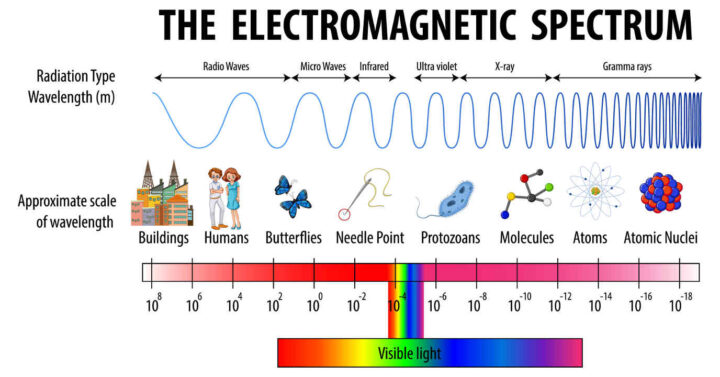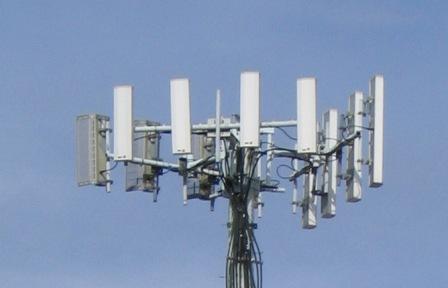
In our modern, technology-driven world, electromagnetic fields (EMFs) are an integral part of daily life, they are invisible electric and magnetic fields produced by the movement of electrically charged particles.
While they play a crucial role in powering our gadgets and facilitating communication, concerns have arisen regarding their potential health effects.
In this article I will try to explore what EMFs are, why they are considered dangerous by some, how long is safe to stay exposed to them, at what intensity levels, and what prudent approaches can be taken to minimize potential risks.
What are EMFs?
Electromagnetic fields encompass a wide range of frequencies and wavelengths, classified into two main types: ionizing and non-ionizing EMFs.

Ionizing EMFs, such as X-rays and gamma rays, have enough energy to remove tightly bound electrons from atoms, posing a known health risk.
Non-ionizing EMFs, on the other hand, are lower in energy and include radiofrequency (RF) fields from cell phones and microwave ovens, as well as extremely low-frequency (ELF) fields from power lines and household appliances.
Are EMFs Dangerous?
The potential dangers of EMFs have been a subject of scientific inquiry and public concern for decades.
Some studies suggest that long-term exposure to high levels of EMFs may have adverse health effects, including an increased risk of certain cancers, neurological disorders, and reproductive issues.
However, the evidence remains inconclusive and controversial, as many studies have yielded conflicting results.
It’s important to note that while some research indicates possible risks, the majority of scientific bodies, including the World Health Organization (WHO) and the International Commission on Non-Ionizing Radiation Protection (ICNIRP), maintain that non-ionizing EMFs at typical exposure levels do not cause adverse health effects.
Safe Exposure Duration and Intensity Levels
Determining a specific safe exposure duration and intensity level for EMFs is challenging due to the complex nature of their effects on human biology.
However, established organizations like the ICNIRP have set exposure guidelines to minimize potential risks. These guidelines define maximum exposure levels for different frequencies and recommend safety measures for both the general public and occupational settings.
For example, in the case of radiofrequency fields from cell phones, the ICNIRP recommends a Specific Absorption Rate (SAR) limit, which indicates the amount of RF energy absorbed by the body.
For the general public, the SAR limit is set at 2 watts per kilogram (W/kg) averaged over 10 grams of tissue. In occupational settings, the SAR limit is slightly higher, at 10 W/kg averaged over the same tissue mass.
Prudent Approaches for Minimizing Risks
While the majority of research indicates that EMFs at typical exposure levels are safe, some individuals may prefer to adopt precautionary measures to minimize potential risks. Here are some prudent approaches:
- Distance: Maintain a safe distance from sources of EMFs, especially high-power devices like power lines and certain industrial equipment. Increasing the distance from the source can significantly reduce the exposure level.
- Shielding: For individuals concerned about RF radiation from cell phones, using hands-free devices or speakerphone mode can help keep the device away from the head. Additionally, specialized shielding products can be used to reduce exposure from other sources.
- Limiting Use: Limit the use of devices emitting non-ionizing EMFs, especially in close proximity to the body. This approach is particularly relevant when using laptops, tablets, or cell phones for extended periods.
- Time Management: Balance screen time and device usage with outdoor activities and other hobbies that do not involve EMF-emitting devices.
- Sleep Environment: Create a sleep-friendly environment by minimizing the use of electronic devices in the bedroom, as EMF exposure during sleep might impact overall restfulness.
- EMF Meters: Consider investing in EMF meters to measure the electromagnetic radiation levels in your surroundings. This can help identify potential sources of high exposure.
Conclusions about EMFs
EMFs are an integral part of our technological world, and while some concerns regarding their potential health risks persist, the scientific community largely agrees that typical exposure levels are safe.
The ICNIRP and other reputable organizations have set guidelines to ensure the safety of the general public and workers.
Nonetheless, adopting prudent approaches to minimize exposure, such as maintaining distance, limiting use, and creating safe sleep environments, can provide peace of mind to individuals who remain concerned.
As research continues, it is essential to stay informed about the latest findings and recommendations regarding EMFs and their potential impact on human health.



